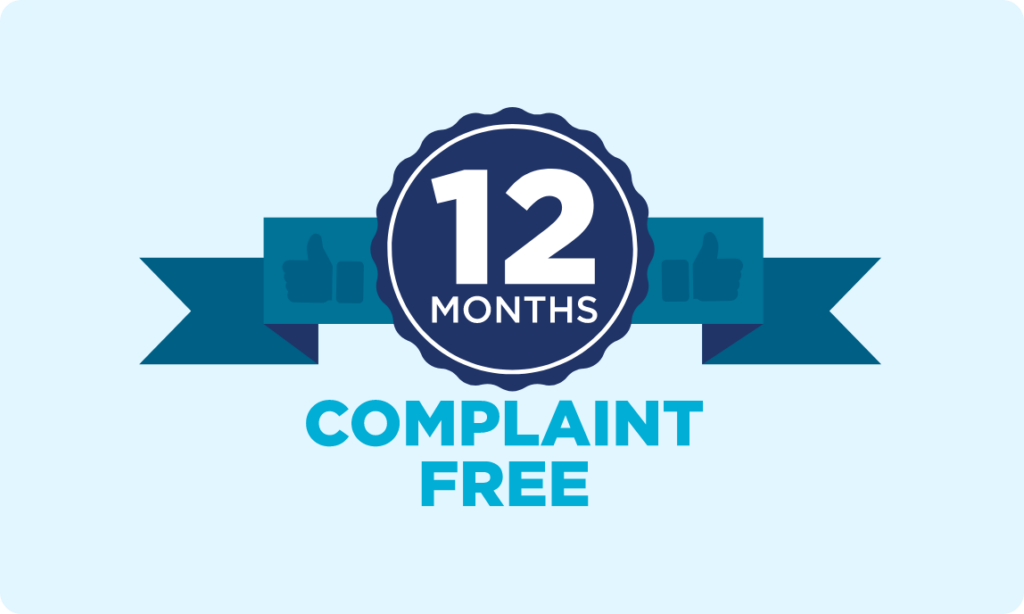Does SEO really exist or is it a make-believe idea that agencies use to make money? The buzz around SEO (Search Engine Optimization) grew to epic proportions last year. Look at the trend for the term “SEO” since 2004 on Google Trends (https://trends.google.com). You’ll see that late in 2017 the interest dropped off. Unfortunately, there have been so many major updates for search engines, that much of the industry is again uninformed about what SEO really is or what it means to “Optimize for Search Engines”.
I cannot begin to express all of the misinformation that there is about SEO. I also can’t tell you how many clients we have gained who were so disheartened with their digital marketing that they wholeheartedly wondered if it even works. By far the most requested post we have received is about how SEO really works. The easiest way to explain the search engine optimization process is to expose bad practices by making a list of correct ones. Let’s start from the beginning.
Websites are the basis of it all.
This is going to be the point of reference for the vast majority of your clients or potential clients. There are many tools that we can use to find issues that need to be fixed. There are 2 categories for your website that these issues will fall into. As a disclaimer, these tools will only show you the issues not fix any of them for you. Especially on the technical side, fixing the issues may require hard code and use of a developer.
- Technical Issues
There are so many technical parts to your website that unless you are a developer, you’ll have no idea what most of the issues even mean. Still, for your own reference here’s where you can start.
Here you can get a good idea about how your website compares with others as a whole. There are so many good metrics here that it’s a great starting point. Some of the variables are really difficult to rank well for. They each will give you an average score if you mouse over the symbol beside each rating. In GTMetrix you should strive to have scores C or better.
This is Google’s version of GTMetrix. This tool has been recently updated and also includes a lot of great metrics. Since it’s a Google based tool you can be sure that it has lots of items that you need to address. Using this in addition to GTMetrix is advised.
This is where you will connect your site to Google and give it all the information that is needed so that site structure is clear and errors are resolved. It also gives you great insight into what inbound and outbound links you have in the website. All that is involved is connecting Google to your domain and then uploading a sitemap.
- Content Issues
Now that we have fixed any technical issues with the site itself, we turn to how it’s being used. The most important variable to consider here is how your site visitors use your site NOT how you think or hope they will. Since there are multiple choices for some of these services I will just list the importance and you can choose a provider you like.
A solid website will have a bounce rate under 65% and multiple pages that get good traffic. If your site is 20 pages and all the traffic is on 2 of them then it’s time to reconsider what the strategy is on content layout. There is so much data here that it can be overwhelming on what to even look at. If you want more detailed analysis there are multiple ways to learn or have an Agency help.
2. Heat Mapping (user experience)
Along with analytics, you can actually see how people are using your site by utilizing heat mapping or session recordings. There is no substitute to watching real people use your site. You will gain so many good insights into the friction points of your site. Then you can have your web developer make adaptive changes so that you have more conversions. This is also a great tactic to find areas of your site that are broken.
3. Keyword Density and Content Length
If you REALLY want to dive into this topic then take a look at this blog entry. Here’s the take away in summary; length matters, 900+ words, and keyword density really doesn’t. Age of material and site matters a lot but it has to actually be engaging. This is the one place where there’s no faking it. Either your company has something legitimate and authentic to say, or you’ll never rank. There is absolutely no substitution for original, engaging, authentic content.
4. Meta Tagging, Alt Image, Titles
The good news about this item is that it’s really not that hard to do. The goal is just to make sure that all images, pages and media on your website have identifiers other than picture1245 or img23837. Even though this may seem like an insignificant step, Google knowledge panel is heavily reliant on it. This knowledge panel is how Google references your site when it comes to finding relevant content for searches. This is sometimes referred to as SERP (Search Engine Result Pages) Features.
Randomly Choosing Keywords Means Failure.
I guarantee you that your business can rank number 1 for something. If I use your business name, plus your location including your state, 99.9% of the time you’ll rank top 3. Guess how much traffic that will give you. Probably not much until you’re a known brand. The goal of choosing the keyword is to get traffic in the cheapest, most effective, most consistent way possible. Here’s what your agency should be evaluating.
- Mobile vs Desktop
Desktop Volumes
Mobile Volumes
Gone are the days that you can just use one position monitoring list and disregard mobile. Now they are regarded as 2 separate things. Take a more in-depth look on this topic in a recent blog post we did about it. The most important take away here is the difference in volumes of the same keywords (above example) on the 2 platforms; 20 total for desktop, 2610 total for mobile! When doing proper SEO, reporting and choices have to be made for both as if they are 2 totally different campaigns.
2. Keyword Difficulty vs. Volume
Google has a keyword planner tool that can be used to see what has been searched in a specific area or city on average per month. You can use this information to gauge just how often people are looking for specific words and phrases while also having some concept of the difficulty for you to rank for those. Generally the higher the cost, the harder to rank for. The goal would be to maximize somewhere in the middle; finding relevant keywords and phrases that have high volume but aren’t exceptionally difficult to rank for. Recognize that the choice of keywords doesn’t need to be something the client does, but something the agency does.
3. Location and Region
We see SEO reporting from other agencies all the time and one of the many things that is consistently missing is the location targeting of the keywords. Often they will just give you a list of keywords and what positions have changed. If you have a company with multiple locations, the keyword volumes and difficulty will change in different cities. Thus, you have to have different campaigns for each. This is why our SEO pricing is based on this. There absolutely is no one size fits all type campaign, even when the campaigns are for the same company.
4. Monitoring and Being Aware of New Keyword Strategies
Using a monitoring software you can see that keyword rankings and updates on them happen hourly. Through the course of multiple months some of the heaviest hitting keywords WILL CHANGE. One of the worst things that you can do with any campaign in such a fast moving market is to set it and forget it. The entire structure of your SEO campaign cannot be determined on day 1. Maintaining traction will be evaluating all of the previously mentioned factors while also looking for new keyword strategies to get traffic to the site.
Backlinks; A Story About Trash or Diamonds.
You can Google backlinks and you will get an endless amount of theory and advice. If backlinks are what you want, and you don’t care where they come from you can head over to fiverr and buy thousands for almost nothing.
Look it’s so easy you can buy 4400 links for $50! I mean if you have $50 you can rank high, right? The answer to that is ABSOLUTELY NOT. I cannot stress enough that these links you would buy would do absolutely nothing for you. In addition, if you build too many in toxic domains, you’ll actually hurt your sites ability to rank. The overwhelming majority of these links are just profiles on directory sites built by the sellers themselves. Your page on that site will never be visited, and will never boost anything for you.
There’s a saying that the rich get richer. This is generally the case with backlinks as well. In order to significantly boost domain authority and organic ranking from links, you will have to be linking to an already very strong and trafficked site. Can you actually buy these high powered links; yes and no. Yes in the fact that you can indeed broker a spot on a very strong site. No in the fact that you actually have to have strong content. Google has had 30+ algorithmic updates since 2011. YOU CANNOT TRICK GOOGLE INTO THINKING YOU ARE RELEVANT IF YOU ARE NOT. Thus, no matter how many trash backlinks you have, if they are trash, they are worth nothing AND if you want the attention of webmasters of stronger sites, you need amazing content.
This is a good visual way to think about it. All those trash links don’t generate any power so it doesn’t matter how many you have. It’s not until you get into the semi-strong category that anything happens at all. These links will be to regionally strong sites that already have consistent traffic. Diamond links are by far the hardest to get but they will also give you a massive jump in SEO positioning. One side note here; having a profile in all major search directories is an incredibly good idea for all businesses. This includes things like your Google Business Listing, Yellowpages, BBB etc. There are now cost and time effective ways to list in all these places without having to do each one manually. We include this in our Review Management packages.
So Does SEO Exist?
Yes it does. We have worked with dozens of clients who have all see a boost in organic ranking and traffic by following all of the guidelines above. SEO is Santa Claus when all you are getting is a keyword positioning report. The majority of all agencies are selling you services that will indeed grow your digital presence in some form (albeit probably not effectively) and then up charging you for what they call “SEO”. Their version of SEO will be really generic blog posts and a few numbers from Google Analytics and some keywords they handpicked to make it seem like it’s working. If your agency is selling SEO then they should be able to tell/show you measurable actions for each stage of the campaign(s). Additionally, SEO isn’t an initial setup and then nothing but monitoring after. It’s an ongoing process as detailed above. Here’s a quick reference chart that you can use to make sure all parts of best practice SEO are being followed.
Want to talk to us about SEO? Contact us HERE.












